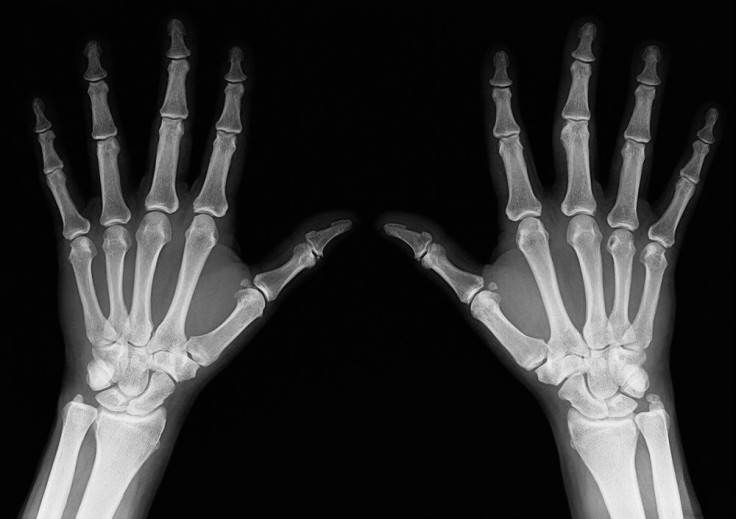Regrowing Bones: 'Bio Patch' Restores Bone Tissue At Damaged, Weakened Sites

Bone regeneration may no longer be limited to science fiction, according to a new study. Researchers at the University of Iowa have created a so-called bio patch that allows localized regeneration of bone tissue within the body. The findings may illuminate new treatments for people with weak bones or other conditions affecting their osseous system.
The study, which is published in the journal Biomaterials, shows that a collagen platform seeded with particles containing genetic information can successfully induce new bone growth within the body. The innovation, which is called a bio patch, ensures sustained internal therapy by giving surrounding cells the genetic blueprints necessary to repair weakened or damaged sites. According to co-corresponding author Aliasger Salem, this is a significant improvement of current regeneration techniques, which typically rely on repeated injections of these genetic instructions.
"We delivered the DNA to the cells, so that the cells produce the protein and that's how the protein is generated to enhance bone regeneration," he explained in a press release. “If you deliver just the protein, you have to keep delivering it with continuous injections to maintain the dose. With our method, you get local, sustained expression over a prolonged period of time without having to give continued doses of protein."
The collagen platform carries the necessary information in plasmids – a group of tiny DNA molecules capable of performing genetic operations independent of chromosomal DNA. Once implanted, these plasmids prompt cells to produce the proteins necessary to construct bone tissue. "We can make a scaffold in the actual shape and size of the defect site, and you'd get complete regeneration to match the shape of what should have been there," said lead author Satheesh Elangovan.
So far, the bio patch has proved effective in several experiments. In damaged animal skulls, it regrew tissue 44 times faster than similar implants with no genetic information. Similarly, it was able to stimulate growth in human bone marrow stromal cells.
The new bio patch recalls a similar innovation announced earlier this year by researchers at the University of Granada in Spain. In “Human umbilical cord stromal stem cell express CD10 and exert contractile properties,” the authors show that that their patented biomaterial can generate local bone growth with umbilical cord stem cells. Like the current study, the Spanish research effort may have a tremendous impact on therapies for osteoporosis, osteogenesis imperfect, and other types of bone disease.
Source: Satheesh Elangovan, Sheetal R. D'Mello, Liu Hong, Ryan D. Ross, Chantal Allamargot, Deborah V. Dawson, Clark M. Stanford, Georgia K. Johnson, D. Rick Sumner, Aliasger K. Salem. The enhancement of bone regeneration by gene activated matrix encoding for platelet derived growth factor. Biomaterials, 2014.
Published by Medicaldaily.com



























